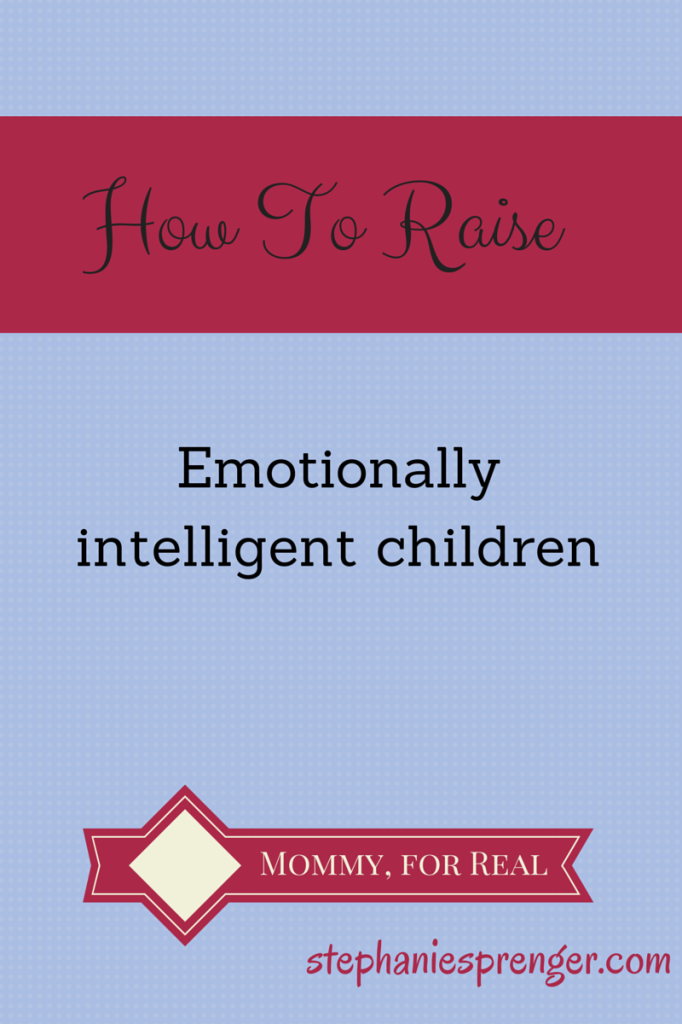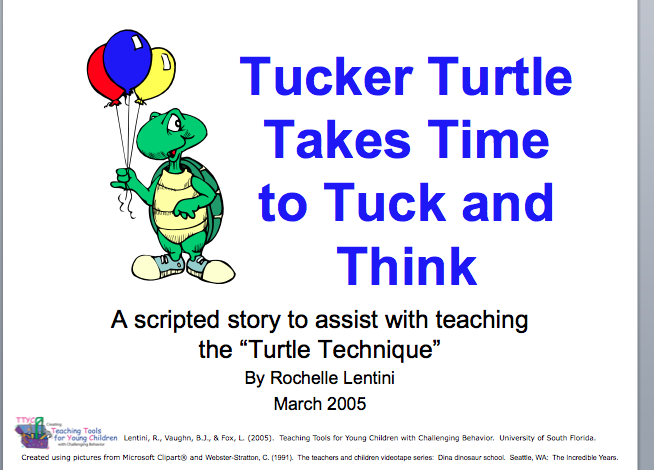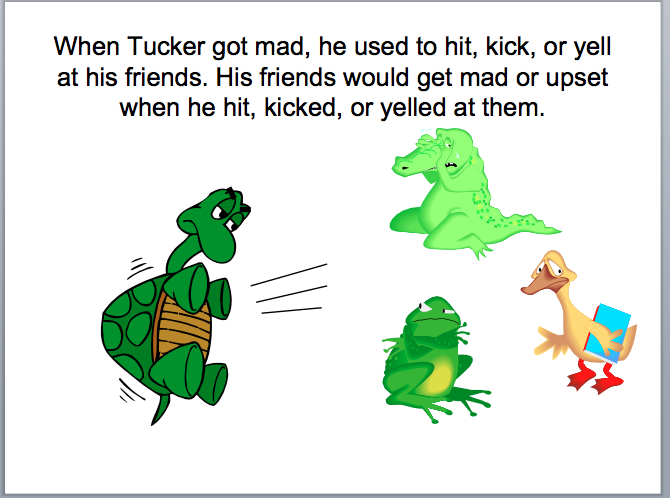My 20 month old daughter, splayed out on the sidewalk, carefully rested her head on the pavement and forcefully announced, “Fit!”
“Oh, you need to have a fit,” I observed. “Go ahead. Let me know when you’re all done.”
It wasn’t the first time she had made such a proclamation; a few months ago, when she first demonstrated the need to have a “temper tantrum,” instead of reacting with dismay, I told her, “It’s okay if you need to have a fit. You can lay on the ground until you’re done.” In the weeks that followed, she didn’t have meltdowns very often, but when she did, stubbornly dropping to the ground in that classic toddler maneuver of non-compliance and protest, I would acknowledge that she was having a “fit” and calmly wait until she was done.
Imagine my surprise when, after this had happened a few times, she began to inform us, “Fit!” before she threw herself to the ground. In a way, I felt almost proud.
Knowing Yourself as a Parent
In the past few weeks, I have spent a lot of time reflecting on myself as a parent- particularly my strengths and things I suck at areas that could use some improvement. A few weeks ago, over at The HerStories Project, I wrote a post about using your Myers-Briggs personality type to help understand your style as a mother. As an ENFJ, identified as the “Heart-to-Heart Mother,” I determined that my personal strengths lie in nurturing my children, communicating openly with them, and readily discussing personal concerns, both theirs and mine.
I first read the book that inspired this post, MotherStyles: Using Personality Type To Discover Your Parenting Strengths, by Janet Penley, when my oldest daughter was barely two, and as I absorbed this very astute assessment of my personal strengths and struggles, I wondered, “When exactly are these “skills” of mine going to come into play? When will I find myself thriving as a “heart-to-heart mother?” I finally feel I have arrived at a stage of parenting where I can see how my natural tendencies are helping me to thrive in certain areas. Last week I wrote a somewhat controversial post about using profanity, and one of my assertions was that a priority of mine is to raise emotionally intelligent children. The term “emotional intelligence” may mean a variety of things to different people, so for the sake of clarity, I am going to focus on four areas that represent my own vision of emotional health. They are:
- The ability to identify feelings as they are happening.
- Expressing these feelings in a way that is not harmful to others
- The development of empathy towards others
- Articulating one’s emotional needs to others clearly and appropriately
Use Your Words
We hear it repeated over and over by parents, desperate to get their kids to communicate with them: “Use your words!” they implore, hoping to get their child to resemble a modern human instead of a caveman. When my oldest daughter went through the tantrum stage that was typical of 1-3 year olds, she developed some behaviors that, while age-appropriate, were somewhat problematic: hitting, throwing things, and even a brief foray into biting (shudder.)
We started to encourage her to stomp her feet and shout, “I’m mad!” instead of lashing out- it was surprisingly effective. Adding a physical component- stomping, banging a drum, etc- helped to add a satisfying outlet to the verbal expression of her frustration.
As she grew older, she continued to be skilled at putting a label on her emotions- frustration, disappointment, fear, anger- and I continued to reflect her feelings back to her. When our kids are little, it is sometimes necessary to help them find a voice for their struggles. I try not to force an emotional response onto my child by saying things like, “You’re sad” or “You’re mad,” since we can’t always tell exactly how they are feeling. Sometimes I will observe, “You look frustrated,” or even add my own viewpoint, “When I can’t get what I want, I feel disappointed,” and “When I fall down I feel really angry and embarrassed!”
I think one of the most essential things we can do to help our children begin to recognize and express their feelings is to model our own emotional responses. Rather than the 1950’s model of pasting an eternal smile on our matriarchal faces, it is OK to tell our kids, “Mommy is really angry right now because her favorite vase just broke,” or “I am really sad that Grammy and Papa went back home today.” I collaborated with my childcare provider, Teresa Linder, who happens to be one of the most experienced child development experts I know, to brainstorm for this post. She emphasized the value of parents modeling healthy expression, and added that reading stories with our children and discussing the underlying feelings and situations is another helpful strategy.
In my post about swearing, I referred to the “Alterna-Swear” that my daughter’s kindergarten teacher taught them to say when they were upset- “Mr. Padinky!” I received an abundance of comments from people sharing their diverse opinions on profanity and self-expression for children, ranging from moms who allow their children to swear at home, to people who think that displays of extreme emotion are tacky. However we do it, I think it is important to help our kids find a way to express all their feelings- even the deep, dark, ugly ones.
The Value of Empathy and Validation
When my oldest daughter was three, my husband and I took a Love and Logic parenting class. We both found the information to be extremely helpful in dealing with a variety of parenting challenges (I highly recommend you visit their website and explore their literature!) and were easily able to put much of it into practice.
One of the most useful things we took away from the course was the importance of integrating empathy into our interactions with our children. (In fact, this goes a long way with adults, too. The next time your spouse is venting about a problem, try responding with an empathetic comment such as “That sounds really frustrating” rather than providing a solution they may not want to hear.) When I have reached my boiling point mid-tantrum, I try to muster up enough empathy to say, “Oh, man! What a bummer! You threw your ice cream cone on the ground and now it’s all gone,” even though I may feel like saying, “Serves you right, you little whiner!”
I recently began reading the book Siblings Without Rivalry by Adele Faber and Elaine Mazlish, and one of the most beneficial things I read was their suggestion to try to validate your child’s feelings. When an older sibling explodes and says something like, “I wish my sister had never been born,” instead of responding with, “What a terrible thing to say! You should be ashamed!” try instead to find something, anything, about their comment that you can validate. For example, a response such as,”It sounds like you’d really like some time alone with Mom,” or “It seems like your little sister is really getting on your nerves right now,” goes a long way to validate your child’s unhappy feelings.
I think this notion of validation applies to scenarios beyond dealing with sibling rivalry- I even try to apply it when my children come crying to me with yet another non-serious injury. I think as parents, our first impulse is to respond to a child who has fallen down with the standard, “You’re okay.” I fight the urge to parrot that mantra by replying with, “That really hurt!” or “That scared you, but you’ll be okay.” It may seem like a petty case of semantics, but the underlying message is, when our children fall down/bump their head/watch their brother destroy their Lego castle, they are not okay in that moment.
Allowing them to experience their reaction in their own way, while reassuring them that they will feel better, provides them with that dose of empathy and validation without dismissing their feelings.
Sharing our Feelings With Others
Young children often express themselves in ways that are inappropriate or harmful to those around them- pushing their friends, throwing their toys, hitting their parents, peeing on them, (just wanted to see if you were still reading) or even screaming in someone’s face. While I am all for self-expression, it is crucial to balance it with self-regulation and containment.
Teresa introduced me to some exciting research in this field by the organization TACSEI-Technical Assistance Center on Social Emotional Intervention for Young Children. TACSEI provides some outstanding resources to help children cope with challenging emotions. Visit their website to explore some free downloadable resources and learn more about their philosophy.
One of their resources is called the Turtle Technique, and features a story you can read to your kids about Tucker the Turtle and how he learns a new way to handle his anger.
With both of our daughters, we have read the Best Behavior series books (not quite as uptight as they sound) by Martine Agassi Ph.D. and Marieka Heinlen. Our favorite are “Hands Are Not For Hitting,” “Teeth Are Not For Biting,” and “Words Are Not For Hurting.” As parents, we don’t have all the answers, and the right response is not always readily available to us. Using books like this to provide instruction when we have absolutely no idea what to say to our kids can be a lifesaver.
The concept of “time-out” is somewhat controversial; many people swear by it, and others claim that it is overly punitive or doesn’t work for their kids. I don’t like the idea of “punishing” my six year old for being disappointed, but that doesn’t mean I am going to allow to her to sit at the dinner table and wail hysterically because we’re not going out for ice cream. There is a time and place to say, “I’m sorry you’re disappointed, and you can cry about it as long as you want to. However, we are eating dinner, so you may go cry in your room. See you later.”
Part of my job as a mom is to help my daughters realize that their feelings- all of them- are acceptable and worthy of being expressed. However it is equally important that I help them find ways to cope, self-regulate, and contain their emotional reactions.
It is not okay when your “freedom of expression” causes harm to another person, nor is it okay when a family outing or Mommy and Me class is interrupted by a ten minute long screaming fit. Sometimes a child needs to be removed from the action until they can get themselves together, in my opinion.
Coming Full Circle
One of the most rewarding things I have seen unfold as a product of my six year old’s emotional self-awareness is her awareness of other people’s emotional experiences. While she (okay, and her mother, too) may struggle with being overly emotional at times, she is incredibly empathetic. Her teachers, and even some other parents, have commented to me how nurturing she is when one of her classmates is hurt, disappointed, or sad. That makes me proud.
The other night I was frustrated because my husband and daughter’s new nightly routine of watching The Voice was interfering with our beloved ritual of “book-club,” when the three of us snuggle together in bed and read silently to ourselves. I looked at the clock that evening and realized they had spent so much time in front of the TV that we had no time for reading, and I snapped, “I’m tired of you guys watching TV after dinner! You’ve ruined our book club every night this week!” (Yes, I’m an excellent model of emotional health, aren’t I?)
My daughter dissolved into tears and replied, “I wish you had just said Please turn off the TV and not told me I ruined book-club.”
Wow.
In that moment, two things happened. First, I realized that she was exactly right, and I had used unnecessary and hurtful words rather than calmly asking for what I wanted. Second, it became clear to me that the lessons I wished to impart about honesty, expression, and emotional awareness were sinking in. Sometimes, as parents, we get things right.
While I am by no means an “expert” in child psychology, I have a lot to say on this subject, don’t I? I may need to do a follow-up segment, as this topic is too broad to be covered by one way too long post. But I’d like to hear your thoughts. What do you think constitues an emotionally healthy child or adult? Do you have favorite strategies for helping your kids express themselves or deal with challenging emotions?
Let’s connect! You can find me on Facebook, Twitter, and Pinterest!
Keep up with all my latest posts right here!
[jetpack_subscription_form]














I am learning. I like your ideas and hope to see more. I know with our grandchild we have taught her to say “Oh shitake mushroom” when she is feeling upset. So we all say it now. I want my daughter to have high self esteem. I will think more on this and share again later.
Thanks so much Mary, I appreciate it!
I’m not sure I have anything to add. How did I survive motherhood without my daughter’s wise child-rearing techniques?
Ha ha… You certainly shaped me into the person I am!
Wow, you said a mouthful here and gave me a ton of food for thought. I probably do all the wrong things many days as a parent and have no defense on that. Just trying to cope and get through the craziness to the other side, but loved how your technique worked so well that Izzy herself seems to be learning and even told you herself by the end of your article from how she answered you. Thank you Stephanie for sharing this here.
Thanks Janine- I have the best of intentions, but obviously I make my fair share of mistakes. I try to be as mindful as possible, but in the heat of the moment, it doesn’t always work out…
This is such a great post, Steph! I love your vision for emotional health. So well-researched and so useful and readable! Your daughter has impressive emotional intelligence! Outstanding job, Steph!
Thank you so much, Jessica, and thanks for sharing it, too!
I am a sponge for information to help me teach my children. I already use some of these ideas but some are new and I am excited to try them.. Suppressing emotions is something we’ve all done .. it’s just how it goes, so getting new tools on enabling your children to learn to express them while still behaving in a way we’d like is awesome! Thanks for your very thought provoking post
Thanks for reading and commenting, Molley! I appreciate it! Glad you liked this post!
Great, great, great post!! Dang, Mama, you rock! I’m into validating my kid’s emotions and feelings because I feel that’s an area where I got the shaft. I was always “too sensitive.” I can see where one of my kids is “too sensitive,” but I never say that. I think back to myself and think, what would I have wanted to hear instead? What would have validated me, but also shown that I was spending way too much time focusing on myself or what I didn’t have? It’s hard.
A major challenge I have is that one of my kids uses their emotions to manipulate me. He will say things like, “I don’t get enough Mama-time” with a pitiful look on his face, implying that his life is a miserable existence because of me, even though he spent three hours outside playing with the neighbor, ignoring me on the patio. I might suggest he come in the next time and have some mama-time or perhaps we can schedule some, which we both forget, and then he’s back to telling me how he needs more mama-time and then I feel like a giant failure as a mother AGAIN. And this is just one little example. I get the “Why did SHE get the last strawberry? Does that mean you don’t love me as much?” At that moment, the love ain’t comin’. Other not nice thoughts are. Gah! I don’t know what to do with this kid. I just take it one day (hour) at a time. Validate his feelings even though I hate them because of they way I interpret them in my head and then when he wails because he doesn’t get his way, I tell him that I understand he’s upset, but if he’s going to wail and disturb the family then he needs to go in his room and come out when he’s calmed down. The other day he was wailing (it is a VERY uncomfortable noise) because I wouldn’t let him use a chainsaw to cut a branch. Seriously???
Thank you so much, Kate. I really struggle with that, too, as my oldest daughter knows exactly how to push my buttons. Being sensitive and empathetic can easily cross over into feeding into a child’s manipulation. Some people claim that kids are not manipulative, but I disagree. You can’t let your guilt drive you to allowing your child to run the show by manipulating you. But where is the line? It’s hard to tell, I think. Thank you so much for commenting and sharing!
I have never read any of the Love and Logic literature, but several of the teachers I worked with attended the workshops to use it in their classrooms and it totally made sense to me! I came from a very loving family that openly expressed feelings, while my husband came from exactly the opposite. My kids know I’m the nurturing empathetic one, and they totally use that to their advantage sometimes!
I’m definitely the nurturing, empathetic one in our parenting duo also, but my husband really loved taking the Love and Logic class, and he is often better at using the techniques than I am!
oh, yes, oh yes. And I love how in your “failure”–acting not as you want to act in the moment–there is actually success. It happens to me all the time, and it’s such a bittersweet moment: I suck–right now–but overall, I’m clearly doing something right.
Thank you so very much for that…and for sharing, too!
It’s a waste that many kids don’t learn the value of empathy these days. Thanks for sharing, Stephanie.
Thanks for stopping by, Michelle!
“Part of my job as a mom is to help my daughters realize that their feelings- all of them- are acceptable and worthy of being expressed. However it is equally important that I help them find ways to cope, self-regulate, and contain their emotional reactions.”
Yes, yes, yes. As an adult, I remember my mother once saying “I’m having bad feelings and I don’t like it.” And I said, “There are no bad feelings. There are just feelings. It’s what you do with and about them that is good or bad.”
I want to teach this to my daughter. Her tantrums almost always stem from her difficulty in expressing her feelings (she has some language delay), so I say things like “Mommy understands how frustrated you feel.” This almost always helps her move past the tantrum, because it’s not stemming from disappointment–it’s stemming from her perception that she cannot express her disappointment. I’m trying to help her put words to the feelings, even if she’s not sure how to say those words aloud.
I love that comment- thank you so much for that. I think your strategy is great- I also have found that, even with my toddler, simply repeating back to her what she wants, even though she can’t have it, is helpful. “You are mad because you want a cookie!” Rather than just saying, “No, you can’t have one…” Glad you stopped by!
I am glad I found your post about emotional health now that I am starting to fight my recently diagnozed breast cancer…
Best wishes to you- take good care of yourself, and thank you for stopping by and commenting!
Wow, way to go with this awesome epic post, Stephanie! I cannot tell you how many times we say “use your words” to my son every day, every hour…
I think it’s amazingly awesome that your daughter now says “fit!” and then proceeds to throw a fit. I feel like that’s huge progress, actually. Oh and I love love love the photo of her in the yellow headband….that face!!! EEEP.
Also? I love your graphic of Tucker the Turtle! I’ve never heard of him but now I must have that book. When my son Tucker is stressed out by somebody taking his toy or breaching his invisible barrier, he loses language completely and lashes out by kicking or shoving -and occasionally even biting which horrifies and terrifies me because I’m scared he’s going to do it “for real” one of these days. His teachers and I are working on this with him and now I MUST have that book. I did write him a letter from Elmo. He has it memorized and now every random piece of paper makes him say “Dear Tuh -uck.” Here’s the letter because I know that you’re dying to know:
Dear Tucker,
This is Elmo. I love you. Please don’t bite your friends. Biting your friends is not nice.
Love,
Elmo
Oh my GOD, that letter from Elmo makes me want to cry, laugh, and pee. And DUDE, go download that book right now. It is so awesome. Let me know if you have any problems finding it. And also, thanks for your kind words- I worried that this was either waaay too long, sanctimonious-sounding, or a snooze-fest. And obviously it’s not at all funny. Except for the part about kids peeing on you, which I snuck in to see if anyone would actually read it. Which, I’m thinking, maybe nobody did. :/
Great post! This is all great advice. Now that my girls are a little older (10, 8, & 5) I have learned that I also have to take into consideration their personalities as much or more than I consider my own. For example, my oldest is very stoic. I desperately want her to open up and express her emotions as she approaches teenager-dom (Yikes!), but that’s not her style and if I push too much it backfires. My middle, on the other hand, falls apart at things that , to me, seem trivial. I think they have a good grip on the empathy, but as they get older their emotions become even more complex, so helping them understand and express them is an ongoing process.
Yes! That is such an important point- considering their individual personality types! Thanks for that comment!
Stephanie, I like your take on this and honestly, I mostly give in. Gotta learn on self control and also stand stern when say NO. I am the person who ought to learn than my kiddo..
thanks for your beautiful and responsible advise…sharing it across!
It is so hard though, sometimes, isn’t it? Thanks for stopping by and sharing!
Can I give you a major virtual high five right now!? Most adults I know (myself included about 80% of the time) do not have the emotional bandwith to say “I wish you had _____ instead of _______.” I statement- check. Makes feelings known in a respectful way- check. Expresses self in a non-threatening, non-defensive way- check. I think your child is probably emotionally mature enough to be my therapist at this point. J/k. Sort of.
Virtual high-five accepted! I had to laugh at your assessment of my daughter’s ability to serve as your therapist. Um, yeah, mine too… She is pretty awesome.
Wow – this is just awesome! I agree with you that it’s not just semantics and the words we use with our children are so important in terms of responding (and I am so guilty of the “you’re okay” response when they get hurt.). I just love the image of your little one yelling “Fit!” It makes me think about my daughter’s angry outbursts – so often I try to stop them right away (as the screaming drives me crazy), but there’s probably some value in letting her vent and fuss and then learn how to move on from it. And I also find empathy (“yes, that would make me mad too” has really helped with my children.
Thanks for sharing this!!
Thank you so much for that, Sarah, and for tweeting as well! I am so glad you stopped by! I too am always catching myself saying, “You’re okay”- it’s just an ingrained habit for me. I will admit that it is often very difficult for me to follow my own advice in the heat of the moment! Sometimes you just want a tantrum to STOP.
I was smiling and sometimes nodding through this! I loved your methods, and the foot stomping.. why didn’t I think of that? lol! the funny thing is, how we don’t realise that when we first have children, especially around the age of two, that our words, as you said, can make or break. It took me a long time to get that into my head too. And, like you, sometimes it takes the child to let us know when we should have just said, turn of the tv, for example. I am doing it all again, talk about glutton for punishment! I have recently started babysitting again, and oh how easy it is twenty years on! I know now how to say, do and think. For example the other night, terrible twos kicked in and the little girl wouldn’t stop screaming for her mother, she had been fine before. All I said, calmly I might add!, was, if you want to watch tv you will stop crying, if not I will put you to bed. Bed it was! but after ten minutes I went back up and asked her if she was now calm, I was greeted with a nodding head, and after that it was fine! phew! if only we had our knowledge at the start, oh how easy it would be! loved reading this, thanks.
Thank you so much for sharing your perspetive, Nell! It is fantastic to hear that- glad you stopped by today! I hope you come back again!
I often employed the “use your words” approach with my kids when they were little. You bring up some excellent points, Stephanie, and to be honest, I was feeling like a crappy parent as I was reading how much energy and thought you have devoted to raising your children to be emotionally intelligent. I didn’t take classes or read books or blogs like yours when in the early years. But then I realized that my kids are emotionally intelligent despite my failings. They are empathetic and intuitive, and I truly feel that they know they are loved and they are worth their weight in gold. I don’t know how it happened, but it did. I just have to remind myself that they are such different people; the way I talk with one is not the way I talk with the other.
You are so right, Dana. Our kids are wired the way they are wired, and we can impact them in certain ways with our parenting, but in some capacities they pave their own way. I also like your point about how they are different people- I have no idea how my toddler will differ from her older sister as she grows, but I am looking forward to finding out!
I love the way your daughter handled the TV thing. It proves that our teaching really does sink in.
Personalities of each child most certainly plays a part in all of this, too. Each of my kids has a different way of handling things, and we need to work with each one differently.
Your empathy and validation points reminded me of this hilarious video going around lately. Enjoy.
It’s called “It’s not about the nail.”
How have I not seen that yet? That is priceless- so glad you shared. And it tied in so perfectly to this theme! I love your point about the different personalities of kids!
I actually love that she recognized she was angry and needed to let it out. Announcing “fit” and then calmly lying down to have one is just fantastic. I want my children to know it’s okay to feel ALL emotions. It’s just healthy.
I love your whole approach. “How to Talk So Kids Will Listen and Listen So Kids Will Talk” and “Siblings Without Rivalry” by Adele Faber and Elaine Mazlish, are two of my favorite parenting books of all time. I’ve read them both multiple times. (I need refreshers every two years or so) I even tracked down videos and a workbook from “How to Talk” and did a mini-parenting group using them a few years ago. –Lisa
Wow! Great advice! My sister and brother-in-law live with my family and their two kids. My nephew is turning three and my niece is turning two and they swear by both being dominant and being caring. I’m sharing this with them so they can get some more ideas since they’re still new parents.
Thanks for sharing!
Thanks Keith- glad you found something valuable in the post, and glad you stopped by!
Nice work! I am mostly using a combination of Bud Light Lime, profanity and thoughts of suicide to get my kids through the early stages of their lives. I may have to try to consider some of your information here not as an alternative, of course, but to incorporate.
Snort. Perfection.
This is such a great post. Not only because your grasp of parenting with empathy is so clear, but also because anyone who reads it will see that parenting with love and logic really works. I think we all want to do it intuitively, but sometimes it’s hard to see the consequences of am offhand reaction until it’s too late! Also from Faber and Mazlish How to Talk So Your Kids Will Listen and Listen So Your Kids Will Talk. Brilliant.
I am not surprised that you are a Love and Logic mom! I love it, too. The books and CDs are so helpful. I have to read the other Faber and Mazlish book ow- you are the second person to mention it! Thank you so much, Jen!
Just wanted to say that I am reading this at 10:3o pm after a somewhat long day and I would need to revisit this post and learn from it, but I am in awe, as always, of your deliberateness in parenting and life. I love how you constantly strive to understand yourself better for the benefit of yourself and your children. It’s truly an inspiring approach.
Oh, thank you so much Katia! I try to hard to be deliberate (great word for that!) and I don’t always succeed. I try to remind myself of the moments when I do. Somehow writing about it holds me to a higher standard!
Wow, what a powerful ending! It really shows that what you have been teaching her has made a difference.
Thanks Rachel!
Back bc had to show hubs Tucker the turtle!
This is a wonderful post and I have to figure out how to save it and pull it back up in about a 18 months. I am going to look into all of the information and resources that you provided. I love the example of the Voice vs. Book Club. It is wonderful that she can express herself so clearly to you and that we teach and learn from our children all the time. You are a parenting inspiration to be sure!
Hey, lady! I’m late to this party, but just wanted to add my two cents: I do the same as you when my little ones are freaking the eff out; I acknowledge and name their feelings kinda like the narrator on Caillou (why yes I do annoy myself!): “Ella is frustrated. It’s okay to be frustrated,” and then I normally correct whatever she’s done as a result of being frustrated: “But it’s not okay to throw your cup at the dog. Instead, try taking a deep breath…”
Proud parenting moment: my husband and I have already gotten our son to the point where he stops and takes a huge breath before proceeding. 50% of the time he still goes bananas, but the breath is there. *Pats self on back.
Steph, I love that! What a great example of a parenting success! Also, the Caillou reference cracked me up. So far I have diligently avoided introducing my not quite 2 year old to him. But I’m sure it’s coming…
Thanks for writing this. I try to come up with responses when my kids are mad or not being nice to each other, and it doesn’t come easily for me, I’m never quite sure what to say, or what to teach them to say. We have those Love and Logic classes locally, I think I’ll sign up for them. I might buy those books too. I have a 5,4 and 1 year old, so we are in the depths of figuring this all out, and could use some help. My oldest is naturally empathetic, I just need to know how to foster that. My middle child pushes my buttons, which I need to learn how to control my own anger at times, and the littlest one doesn’t say much but thinks it’s fun to bite. Help wanted. Can’t wait to read more posts like this one.
This post was so insightful and inspiring. I am definitely going to try and use some of these strategies with my kids! Thank you!
Thank you so much, Nicole! I’m really glad you got something out of it! Thanks for stopping by- come back again!
great post, we are struggling to help Goblin recognise, label and let out his emotions without hurting others. There are some really helpful ideas in here. I guess it would help if I applied some of them to myself as well.
I’m pinning your post on the Sunday Parenting Party pinterest board and featuring this weekend
I think that this is such a thoughtful and informative post that every parent should read. Thank you for sharing it on The Sunday Parenting Party link-up. Come back to see if it was featured this Sunday! 😉
I love Love and Logic! Another good book is How to Talk so Kids Will Listen and Listen so Kids Will Talk. Of course we all lose it and say the wrong thing sometimes but mostly we use those strategies. Some of Love and Logic seemed manipulative to me like when they use up your time making them do some of your work for that amt of time or making it seem like they have choices when really they are both things made to accomplish what I want (Do you want to shut off the light or do you want me to shut it off). The light is still getting shut off so really they aren’t choosing. I still do it but it isn’t my favorite. Plus they catch onto it not really being a choice when they are about 8 and it surely doesn’t work for 10 and 12 yr olds!
Absolutely needed this! I am at my wits end dealing with my 3yo! Thank you for posting this!
I like reading this piece. I learned some which I find very useful for me being a mother. Motherhood is after all not an easy thing to take responsibility.